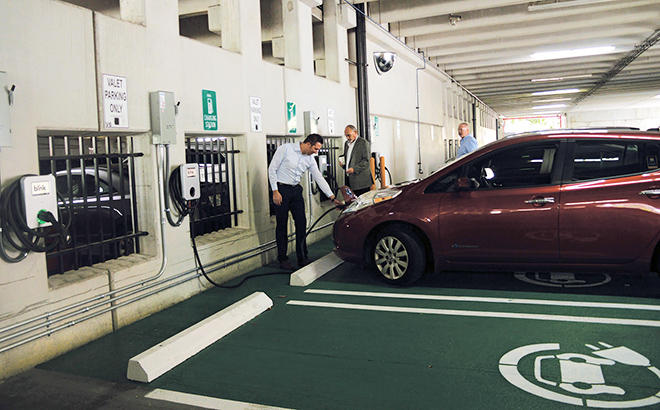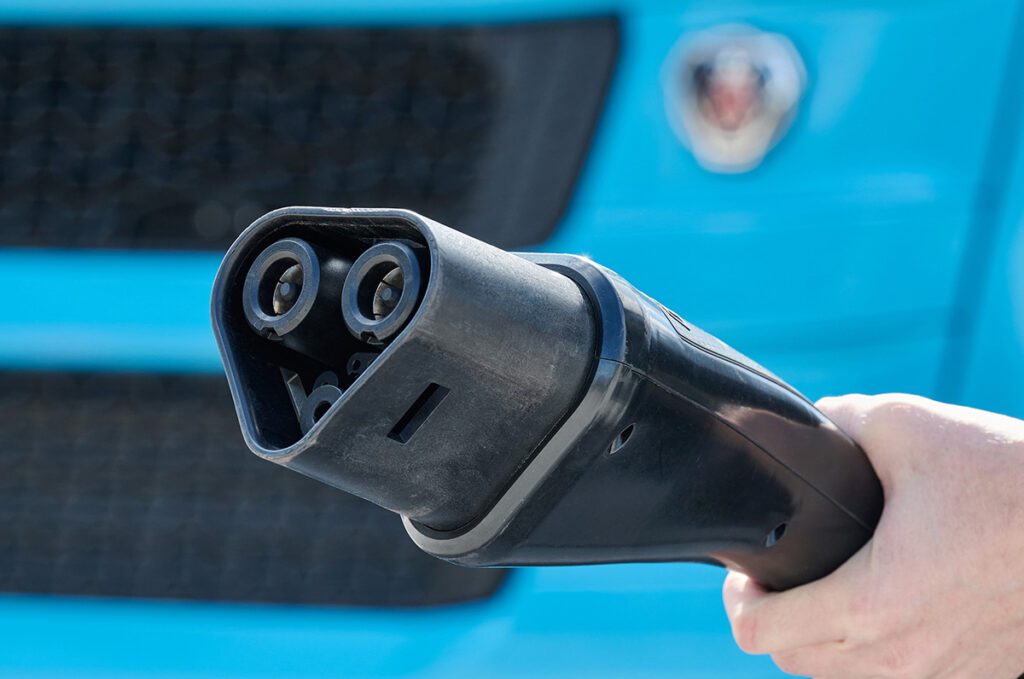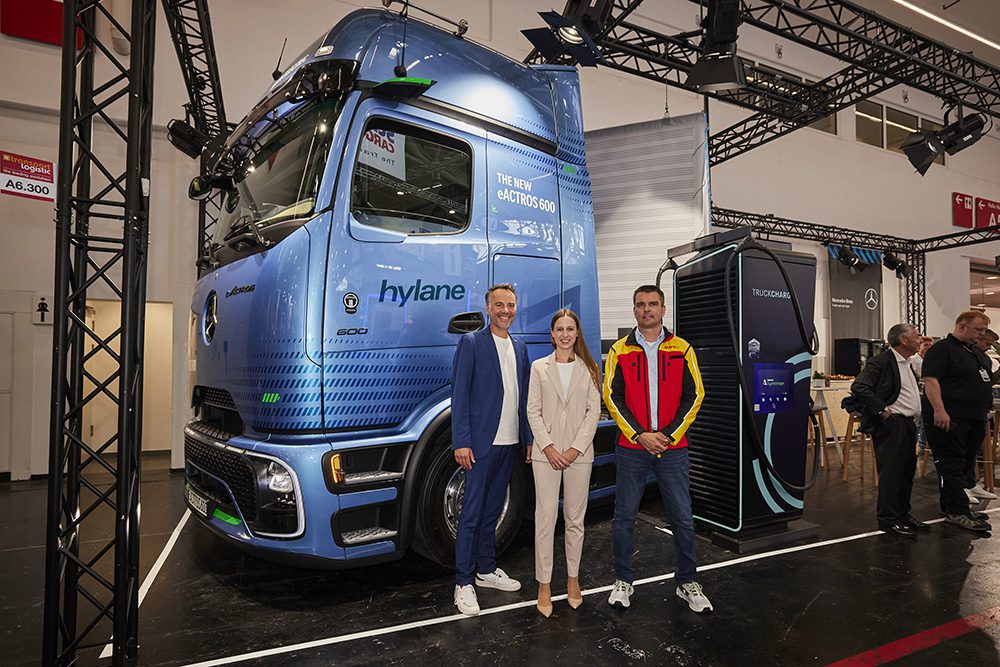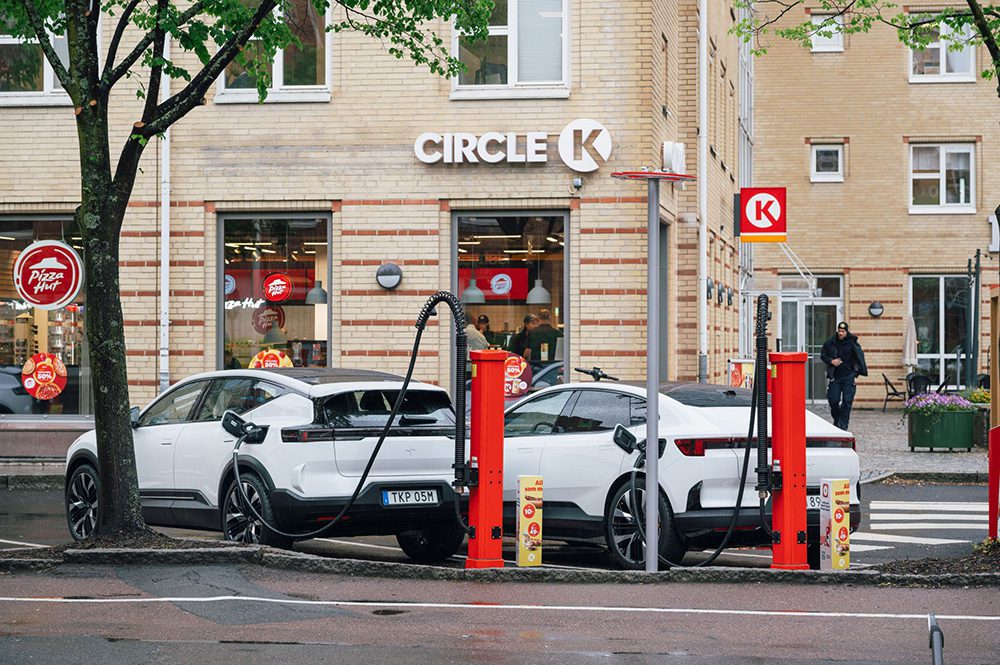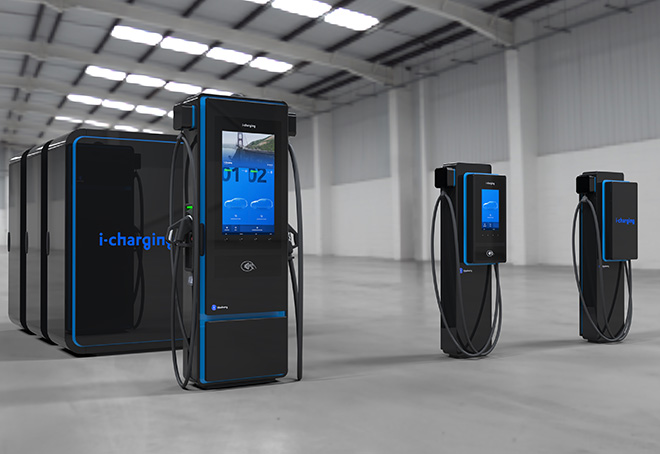Blink Charging has announced the installation of four EV charging stations utilizing local load management, which the company says is the first deployment of its kind. The configuration allows up to 20 charging stations to be deployed on a single circuit.
The design provides equal output to each charger based on the number of stations being used at one time. When one EV is charging, the EV will receive the maximum output of nearly 20 kW. When others connect, the load will be equally shared among them. The system automatically redistributes the output when one vehicle completes its charge, even if it’s still plugged into the station. Future upgrades will allow up to 20 EVs to be plugged in and queued to charge overnight in sequence.
“We are incredibly excited to be deploying anywhere from two to 20 chargers with local load management,” stated Blink founder and CEO Michael D. Farkas. “It will change the conversation from ‘Can our community afford to install them?’ to ‘How soon can we have them?’ The future-proof design of the IQ 200 contemplated this advanced capability, and it was intentionally built into the initial product design. The advanced charger intelligence supports multiple charging ports while delivering the fastest Level 2 charge possible. When installed on a single electric circuit, it can help minimize installation costs.”

Blink expects its local load management feature to be especially useful for multifamily and residential locations. Using the local load management installation configuration, the company says it can maximize the number of charging stations available at any given time on a single 100-amp circuit.
Source: Blink






